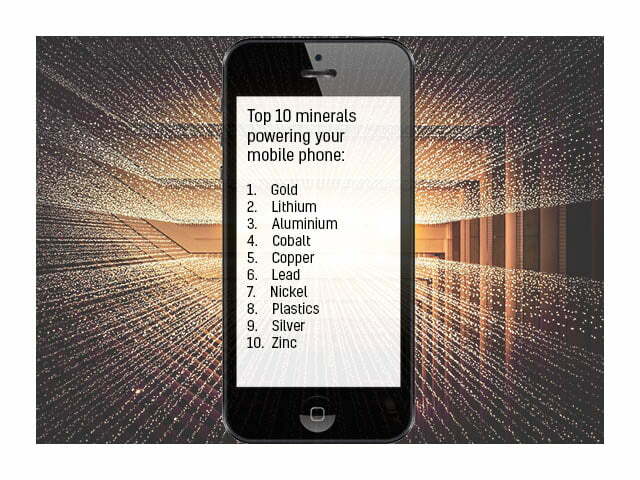The Top 10 Metals And Minerals Powering Your Mobile Phone

Technological innovation has blessed us with many wonderful, modern gadgets, but have you ever considered what metals and minerals are used to power them?
Take the example of your mobile phone – most people are inseparable from their beloved iPhones these days (guilty as charged) – and these amazing gadgets are virtual gold mines. Well, not quite.
Many important metals and minerals are now used in your mobile phone’s electronics to enable high-speed performance and data, improved video and gaming and a more vivid and detailed screen.
From mine to mobile phone, here’s a list of top 10 metals and minerals which power your mobile phone:
- Gold: This precious metal doesn’t just make very pretty jewellery – it’s highly prized for use in making mobile phones because it is chemically stable and conducts electricity. Small amounts of gold are used to make the mobile phone circuit board. The world’s top exporter of gold is China, followed by South Africa.
- Lithium: Can the world’s supply of this soft, silvery white chemical element keep up with the huge demand for use in electronic devices such as mobile phones? Lithium is primarily used in the production of mobile-phone batteries. It is mined from salt lakes and hard-rock ore. And the world’s top exporter of lithium is – drum roll – Australia.
- Aluminium: A silvery, ductile metallic element, aluminium is used in mobile phone cases and components. It is the most abundant metal in the Earth’s crust and is mined in Australia, Brazil, China, India, Guinea, Indonesia, Jamaica, Russia and Suriname. The world’s top aluminium producer is China.
- Cobalt: Far from just a gorgeous, blue jewellery component, this hard, silver-white metal is used to make the rechargeable batteries in mobile phones. It is produced by smelting. The Democratic Republic of the Congo is the world’s top exporter of cobalt, with almost 40 per cent share.
- Copper: Said to be the first metal ever used by man, copper is used as an electrical conductor in the mobile-phone circuit board. Most of this malleable, reddish-brown metal is mined or extracted as copper sulphides from large, open-pit mines. Chile is the world’s top mine producer of copper with at least one-third share.
- Lead: Our mobile phones would be dead without lead – it’s a soft, heavy toxic malleable metallic element used in the solder that joins the parts of our beloved iPhones. Lead is produced from mined lead ore and from recycling. The world’s top lead producer is China, followed by Australia and the United States.
- Nickel: A hard, malleable silvery metal, Nickel is used in mobile phone electrical connections, capacitors and batteries. The metal is extracted from its ores by heating and reducing the ore. The Philippines is the world’s largest nickel-producer, closely followed by Russia, Canada and Australia.
- Plastics: Plastic fantastic – manufactured from crude oils in the earth, heavy petrol is distilled from the crude oil and then treated with heat to create hard plastic. Plastics and fibreglass are used to make mobile-phone circuit boards, which are then coated with gold plating.
- Silver: A soft white precious metal, silver is also used in mobile-phone circuit boards. The metal is primarily produced as a by-product when producing copper, gold, nickel and zinc. The world’s top silver producer is Mexico.
- Zinc: Said to have dietary health and well-being benefits, zinc is a bluish-white metal; brittle at ordinary temperatures but malleable when heated. It too is used in the all-important, mobile-phone circuit board. About 70 per cent of the world’s zinc originates from mining, while 30 per cent comes from recycling. The world’s top exporters of zinc are China, Australia and Peru.


.png)